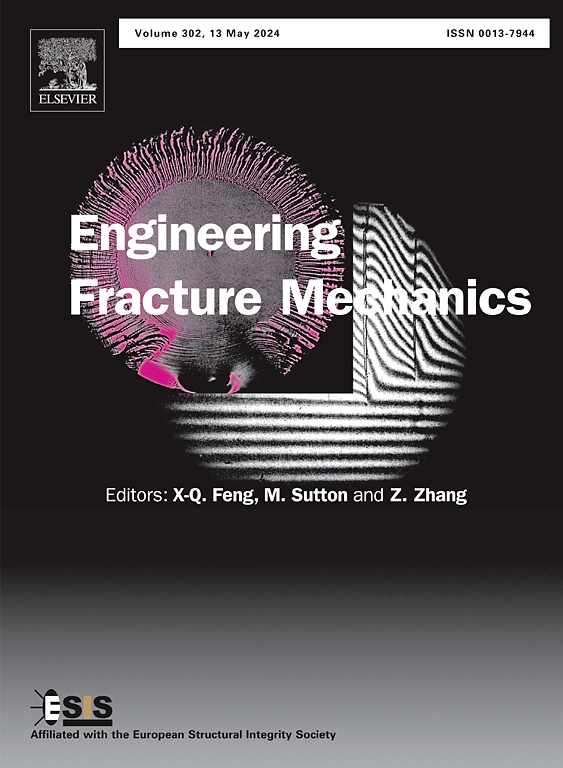Ultrahigh strain-rate dynamic recrystallization in high manganese austenitic steels: Mechanisms of shear band anisotropy and resistance to localized failure
IF 4.7
2区 工程技术
Q1 MECHANICS
引用次数: 0
Abstract
This study addresses the critical challenge of catastrophic shear failure in deep underground support materials under ultrahigh strain-rate loading (∼104 s−1) characteristic of severe rockburst events. We investigate the compression response and plastic instability mechanisms of a novel high manganese austenitic steel (HMAS) specifically engineered for impact-resistant applications through integrated dynamic experimentation and multiscale characterization. Utilizing a miniature split-Hopkinson pressure bar system, we reveal that HMAS achieves exceptional mechanical performance at 2 × 104 s−1, demonstrating a remarkable compressive strength of 2.5 GPa coupled with 45 % fracture strain, and notable strain rate sensitivity. These outstanding mechanical properties are attributed to multiple deformation mechanisms, including twinning-induced plasticity (TWIP), distorted stacking faults (SFs), nanoscale body-centered cubic (BCC) phase transformations, and the formation of adiabatic shear bands (ASBs) at extreme strain rates. Our analysis reveals that dynamic failure in HMAS primarily occurs along the XY and YZ planes, with cracks propagating along the maximum shear stress direction within ASBs. Microstructural examination via electron backscatter diffraction (EBSD) and transmission electron microscopy (TEM) confirms extensive dynamic recrystallization (DRX) within ASBs. This DRX process refines grain structure and mitigates further strain concentration, thereby delaying catastrophic failure despite prior shear localization. Texture analysis reveals that distinct crystallographic orientations between the XY and YZ planes (e.g., dominant Brass/Goss textures in XY vs. Rotated Goss/Y textures in YZ) promote anisotropic ASB formation. These orientation differences alter the Schmid factor distribution for primary slip systems ({111} < 110 > ), favoring shear localization along specific planes. These findings provide a mechanistic understanding of HMAS’s strain rate-dependent strengthening and failure behavior, offering valuable insights into its potential for mitigating rockburst-induced dynamic loads in deep underground engineering applications.
高锰奥氏体钢的超高应变速率动态再结晶:剪切带各向异性和抗局部破坏机制
该研究解决了深部地下支护材料在严重岩爆事件特征的超高应变率加载(~ 104 s−1)下的灾难性剪切破坏的关键挑战。通过综合动态实验和多尺度表征,研究了一种新型高锰奥氏体钢(HMAS)的压缩响应和塑性不稳定机制。利用微型劈裂-霍普金森压力棒系统,我们发现HMAS在2 × 104 s−1下具有优异的力学性能,表现出2.5 GPa的抗压强度和45%的断裂应变,以及显著的应变率敏感性。这些优异的力学性能归因于多种变形机制,包括孪生诱导塑性(TWIP)、扭曲层错(SFs)、纳米级体心立方(BCC)相变以及极端应变速率下绝热剪切带(asb)的形成。我们的分析表明,HMAS的动力破坏主要发生在XY和YZ平面上,裂纹沿着asb内最大剪应力方向扩展。通过电子背散射衍射(EBSD)和透射电子显微镜(TEM)进行的显微结构检查证实了asb内广泛的动态再结晶(DRX)。这种DRX工艺细化了晶粒结构,减轻了进一步的应变集中,从而推迟了灾难性破坏,尽管事先剪切局部化。织构分析表明,XY和YZ平面之间不同的晶体取向(例如,XY平面中主要的黄铜/高斯织构与YZ平面中旋转的高斯/Y织构)促进了各向异性ASB的形成。这些取向差异改变了原生滑动系统的施密德因子分布({111}<;110 >),有利于沿特定平面的剪切局部化。这些发现为HMAS应变率相关的强化和破坏行为提供了机制理解,为其在深部地下工程应用中减轻岩爆引起的动载荷的潜力提供了有价值的见解。
本文章由计算机程序翻译,如有差异,请以英文原文为准。
求助全文
约1分钟内获得全文
求助全文
来源期刊
CiteScore
8.70
自引率
13.00%
发文量
606
审稿时长
74 days
期刊介绍:
EFM covers a broad range of topics in fracture mechanics to be of interest and use to both researchers and practitioners. Contributions are welcome which address the fracture behavior of conventional engineering material systems as well as newly emerging material systems. Contributions on developments in the areas of mechanics and materials science strongly related to fracture mechanics are also welcome. Papers on fatigue are welcome if they treat the fatigue process using the methods of fracture mechanics.

 求助内容:
求助内容: 应助结果提醒方式:
应助结果提醒方式:


